Info
Subfamily: Pooideae
Genus etymology: Avena = "oat" [Latin]
Species etymology: fatua = "tasteless" [Latin] refering to the grain not being a desireable food
Photosynthetic type: C3 (cool season)
Nativity: naturalized - intentional
First recorded in Hawaiʻi: 1904
Legal status: USDA - noxious weed
Map
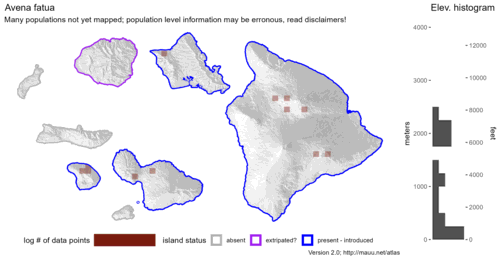
Inflorescence
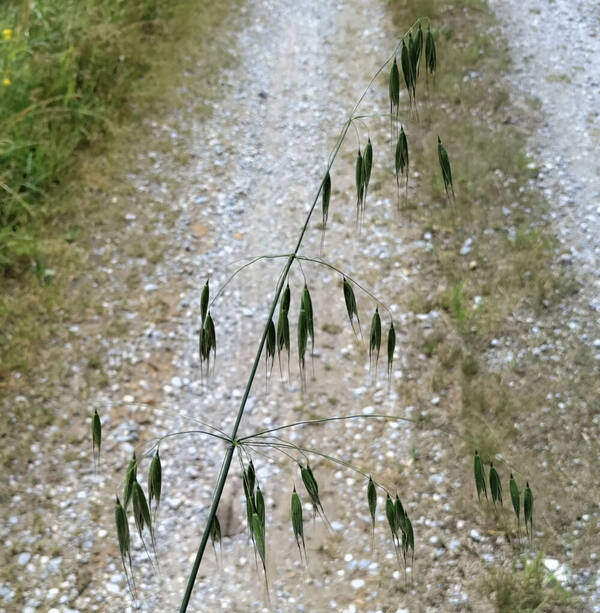 image credit: David_Sandler
image credit: David_Sandler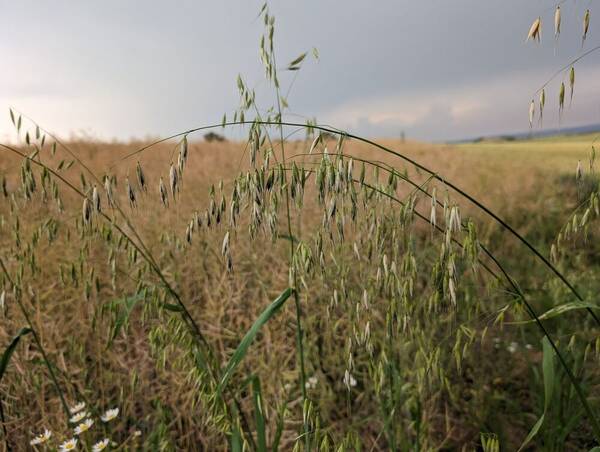 image credit: Arthur_Haendler
image credit: Arthur_Haendler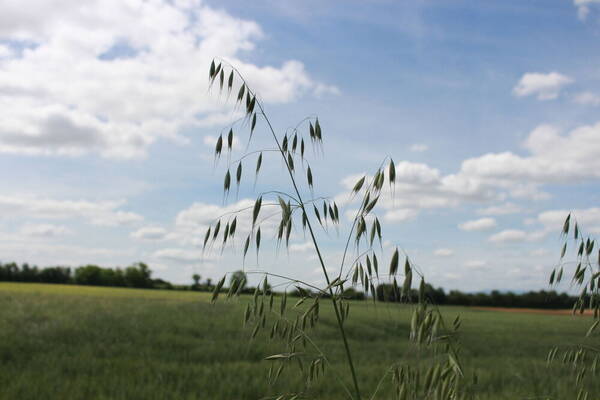 image credit: CorentinD
image credit: CorentinDPlant
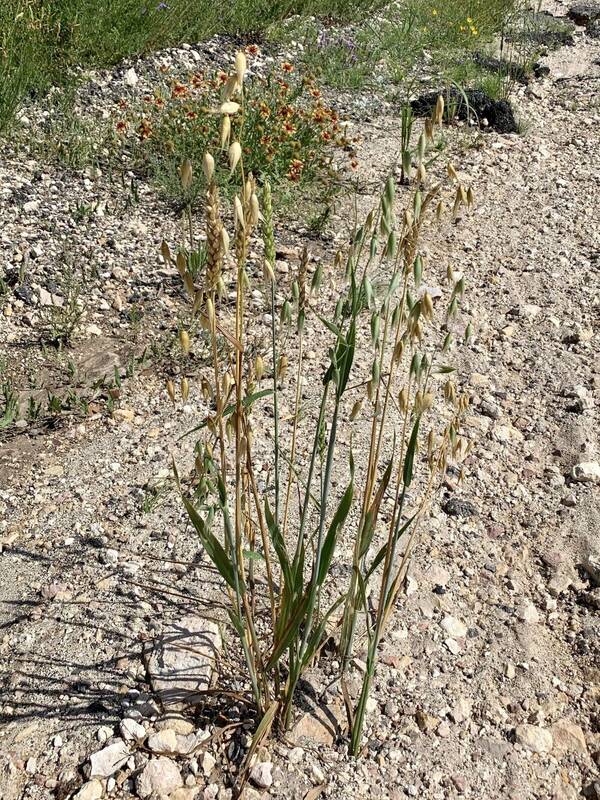 image credit: CK_Kelly
image credit: CK_KellySpikelets
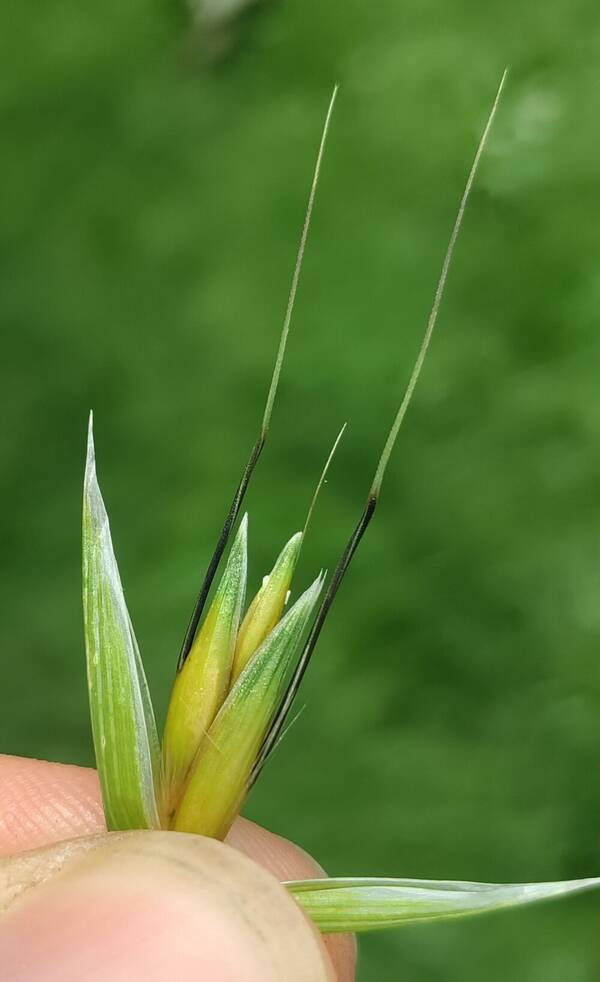 image credit: David_Sandler
image credit: David_Sandler image credit: CorentinD
image credit: CorentinD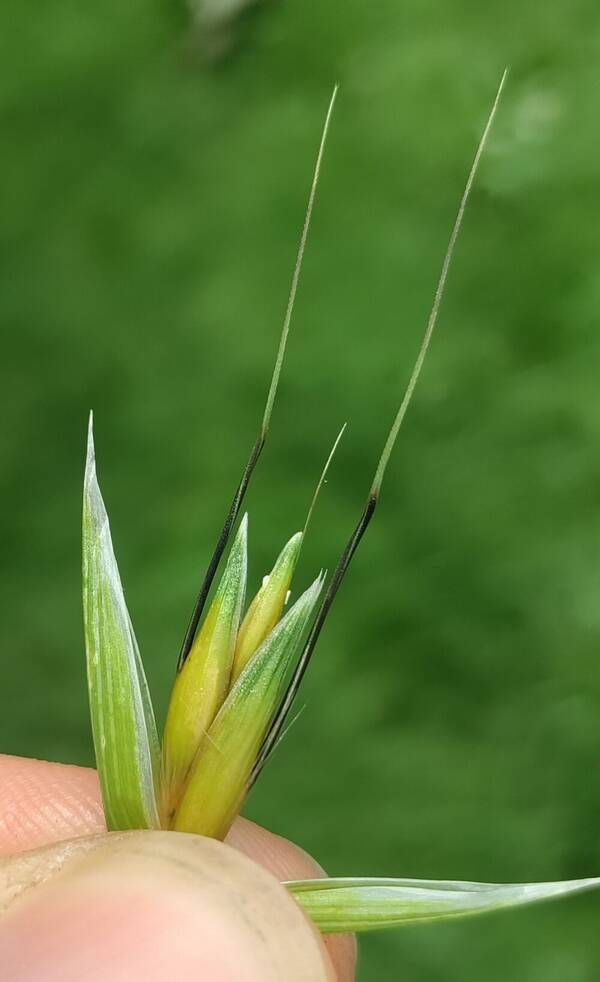 image credit: CorentinD
image credit: CorentinDDescription
Plants annual. Culms 8-160 cm, prostrate to erect when young, becoming erect at maturity. Sheaths of the basal leaves with scattered hairs, upper sheaths glabrous; ligules 4-6 mm, acute; blades 10-45 cm long, 3-15 mm wide, scabridulous. Panicles 7-40 cm long, 5-20 cm wide, nodding. Spikelets 18-32 mm, with 2(3) florets; disarticulation beneath each floret; disarticulation scars of all florets round to ovate or triangular. Glumes subequal, 18-32 mm, 9-11-veined; calluses bearded, hairs to 1/4 the length of the lemmas; lemmas 14-22 mm, usually densely strigose below midlength, sometimes sparsely strigose or glabrous, veins not extending beyond the apices, apices usually bifid, teeth 0.3-1.5 mm, awns 23-42 mm, arising in the middle 1/3 of the lemmas; lodicules without lobes on the wings; anthers about 3 mm. 2n = 42.
(Description source: Barkworth, M.E., Capels, K.M. & Long, S. (eds.) 1993. Flora of North America, north of Mexico. Volume 24. Magnoliophyta: Commelinidae (in part): Poaceae, Part 1. Oxford University Press, New York. 911 pp. http://floranorthamerica.org/Avena_fatua )
Stout annuals; culms (2.5-)4.5-9(-19) dm tall. Sheaths glabrous, smooth, with margins overlapping and eventually spread- ing; ligule 2-5.5(-7) mm long, obtuse, erose-ciliate, often pubescent; blades flat, 3-10(-15) mm wide, scabrous to somewhat pilose. Inflorescences paniculate, 10-25 (-38) cm long, open; spikelets 2-3(4)-flowered, rachilla densely pubescent, readily disarticulating above glumes and between florets; glumes prominently (7-)9-11- nerved, first glume narrowly lanceolate, 19-26(-29) mm long, apex acuminate, second glume lanceolate, 20-28(-30) mm long, apex acuminate; lemmas 14-20(-23) mm long, 5-7-nerved, the nerves often obscure on the glossy, indurate lower '4, glabrous to moderately pilose, bilobed, the lobes less than 1 mm long, callus usually densely pilose, awns usually only on first 2 florets, (18-)28-45(-52) mm long, stout, tightly twisted below the knee, tapering above; palea firm, the 2 keels ciliate. Caryopsis pale brown, linear-lanceoloid, ca. 6 mm - long, appressed pubescent. [2n = 14, 28, 42, 48.]
(Description source: O’Connor, P.J. 1990. Poaceae, pp. 1481–1604. In: Wagner W.L., Herbst D.R. & Sohmer S.H. (eds.)., Manual of the flowering plant of Hawaiʻi. Vol. 2. University of Hawaii Press & Bishop Museum Press, Honolulu )